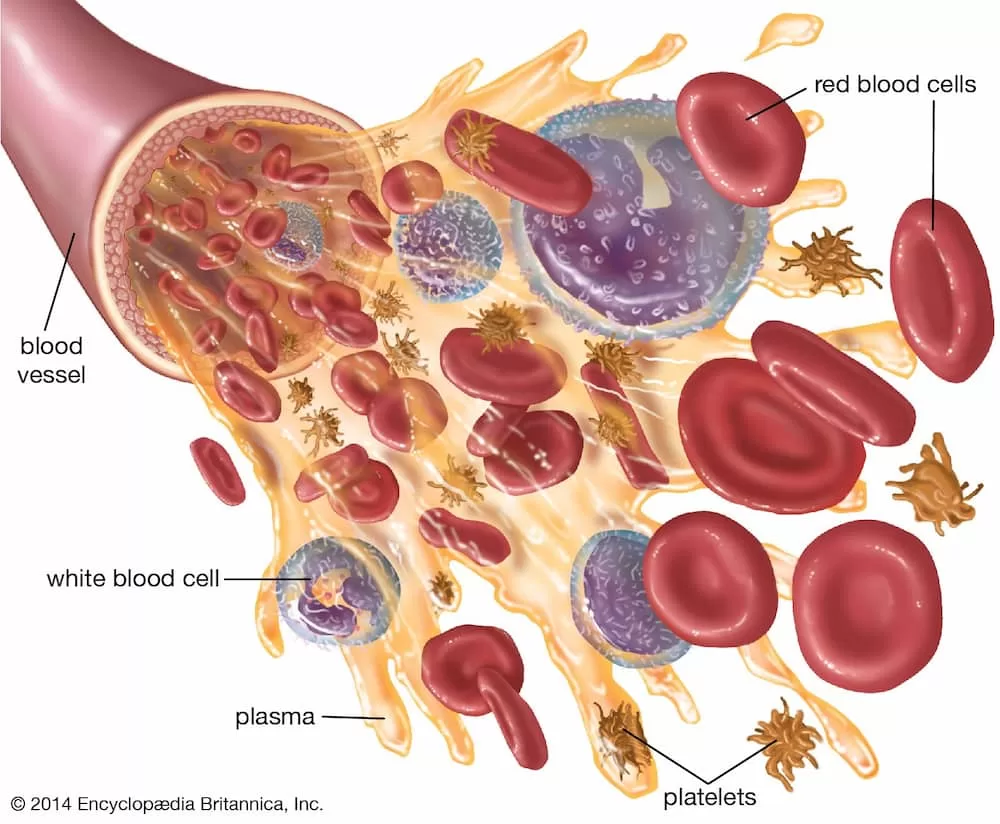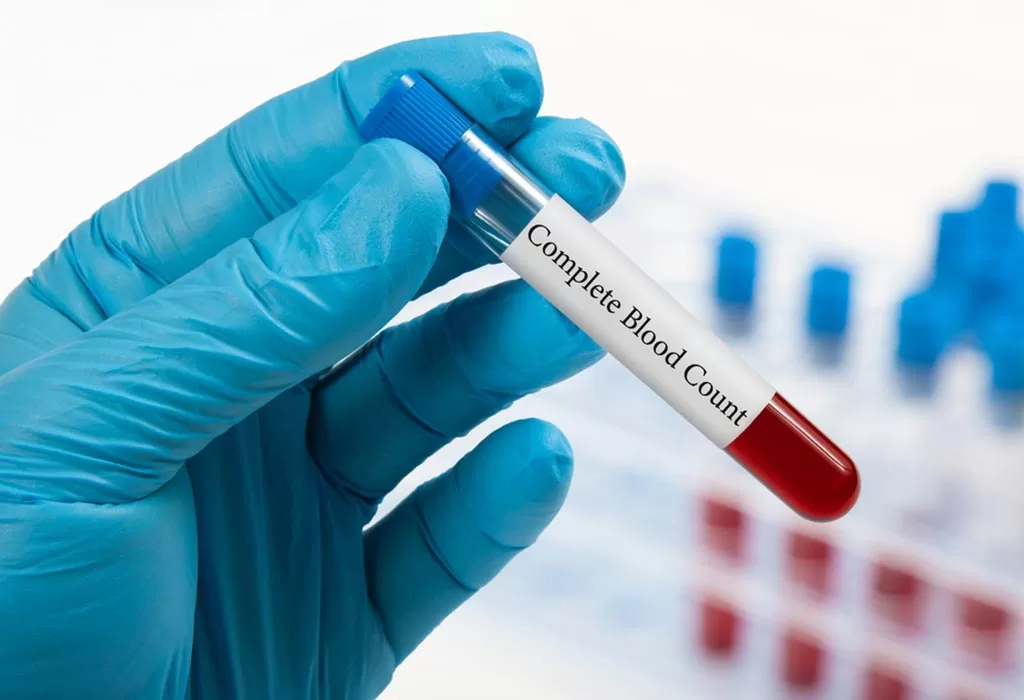

WBC Count: A Guide To Understanding Your Results And Next Steps
Table of Contents
A white blood cell count (WBC) is a test that measures the number of white blood cells in the body.
This test often includes a complete blood count (CBC). The term white blood cell count test is also usually used to refer to the number of white blood cells in the body.
There are different types of white blood cells, and blood usually contains a percentage of each type. However, the number of white blood cells may sometimes be higher or lower than the normal range.
Purpose of (WBC) count
A higher or lower WBC count than average may indicate an underlying disease. Counting white blood cells can reveal hidden infections in the body and alert doctors to undiagnosed diseases such as autoimmune diseases, immunodeficiencies, and blood disorders.
This test also helps doctors monitor the effect of chemotherapy or radiation therapy on people with cancer.

The Blood drawing method for the WBC count test
A healthcare provider or laboratory technician must draw blood to check the WBC count. This blood sample is taken either from the arm’s vein or the vein on the back of the hand. This takes only a few minutes and a little pain.
To kill germs, the healthcare provider first disinfects the needle entry site and then wraps a rubber band around the upper arm. This rubber band helps fill the vein with blood, making blood collection easier.
A healthcare provider gently inserts a syringe needle into your arm or hand and collects blood into an attached tube. Then he unties the rubber band around the arm and slowly removes the needle. Finally, the technician places gauze in the needle site to prevent bleeding.
Healthcare providers use different approaches when drawing blood from young children and infants. This way, they pierce the skin using a lancet and then use a test strip or a small vial to collect blood. The results are sent to the laboratory for review.

Is the WBC count test dangerous?
It is a simple procedure, and complications are infrequent. It is difficult to get blood from people who have narrow veins. The lab technician may be unable to locate the vein or may have to move the needle around to draw blood when the needle is in the arm or hand. This causes a shooting or burning sensation.
However, some rare disorders include:
- Infection at the needle site
- profuse bleeding
- Lightheadedness or dizziness
- Bleeding under the skin or bruising
What is CBC in a blood test?
Complete blood count (CBC) is a type of blood test in which a venous blood sample is taken. The blood from your veins is sent to a laboratory for analysis, and various factors are examined to diagnose cases.
A CBC blood test measures the levels of red blood cells (RBC), white blood cells (WBC), and platelets.
In addition, other important parameters, such as the hemoglobin and hematocrit level, are determined.
This test can help diagnose various conditions, including infections, anemia, leukemia, and other blood disorders.
This blood test is used to diagnose the following:
- Abnormal or immature cells
- Infection
- Cancer Diagnosis
- Inflammation
- leukemia diagnosis
- Sickle cell disease
- Thalassemia
- Nutritional deficiencies (e.g., iron deficiency or iron-deficiency anemia, B12, or folate)
- Immune system disorder

What does the white blood cell (WBC) differential count tell you?
A differential white blood cell (WBC) count can give clues about your condition or what is causing a low or high WBC count. When there is an infection or inflammatory process somewhere in the body, the bone marrow produces more white blood cells and releases them into the blood. Depending on the cause of the infection or inflammation, a specific type of WBC may increase as opposed to other types. Bone marrow disease produces less of that type of WBC, and their numbers drop to normal levels.
In addition to infections and inflammations, various conditions can affect the production of WBC by the bone marrow or their survival in the blood. As a result, their number increases or decreases. The differential count and the other components of the CBC alert the treating physician to potential problems. The results are often interpreted along with additional tests, such as a blood smear test, which can show the presence of abnormal and immature WBCs.
In some severe diseases, some immature forms of cells are released from the bone marrow into the circulation and may be detected by differential WBC count. This may occur, for example, with bacterial infection, leukemia, myelodysplastic syndrome, or myeloproliferative neoplasms.
Some mature cells, including metamyelocytes, myelocytes, promyelocytes, or blasts, may be identified.
If the results indicate a problem, various other tests may be performed to help determine the cause. A doctor will usually consider your signs and symptoms, medical history, and physical exam results to decide what other tests may be needed. For example, if necessary, a bone marrow biopsy may be performed. Because WBCs are usually produced there and mature there.

Interfering factors in white blood cell (WBC) testing
Things that can cause mistakes in the WBC count test:
- Eating, physical activity, and stress may increase the WBC count and change the differential values.
- Late pregnancy and childbirth may be associated with increased WBC levels.
- Patients who have undergone splenectomy have a persistent mild to moderate increase in WBC count.
- The WBC count is lower in the morning and higher in the late afternoon.
- WBC count is related to age.
- Normal infants and toddlers have higher WBC counts than adults. It is not unusual for older adults to not respond to infection without leukocytosis. Older adults may not have increased WBC counts even when faced with a severe bacterial infection.
Medications and interfering in WBC count test
- Drugs that may increase the WBC level include adrenaline, allopurinol, aspirin, chloroform, epinephrine, heparin, quinine, steroids, and triamterene (Dyrenium).
- Medications that may decrease WBC levels include antibiotics, anticonvulsants, antihistamines, antimetabolites, antithyroid drugs, arsenic, barbiturates, chemotherapy agents, diuretics, and sulfonamides.

Clinical significance
Conditions that increase the number of white blood cells (WBC) (leukocytes):
- Infection: During an infection, an increase in white blood cells (WBC) is necessary to initiate and maintain the body’s defense mechanism against it.
- Leukemic neoplasia or other myeloproliferative neoplastic cells: produced by the brain and released into the bloodstream.
- Other malignancies: Advanced non-bone marrow cancers (for example, lung) are associated with leukocytosis.
- Trauma, stress, or bleeding: The white blood cell (WBC) count is likely influenced by hormones (such as epinephrine).
- Tissue necrosis
- Inflammation: The pathophysiology of these observations is complex, including the recognition of necrotic or normal tissue as “foreign” to elicit a WBC response.
- Dehydration: Dehydration is a type of stress that increases the number of white blood cells and blood concentration.
- Thyroid: It seems that thyroid hormones influence the number of white blood cells. It has been seen that the increase of these hormones increases the number of white blood cells.
- Use of steroids: Glucocorticosteroids increase the production and count of white blood cells.
Conditions that Decreased WBC count (leukopenia)
- Drug toxicity, e.g., cytotoxic chemotherapy. Also, drugs that reduce the WBC count
- Bone marrow failure
- Severe infections
- Congenital bone marrow aplasia (e.g., myelofibrosis): Associated with all types of bone marrow failure, resulting in decreased WBC production.
- Autoimmune disease: (pathophysiology) This observation is not known.
- Hypersplenism: In this condition, the spleen more intensively extracts WBCs from the bloodstream.
- Dietary deficiencies (such as vitamin B12 and iron deficiency)
Clinical considerations
Elevated WBC count (leukocytosis) usually indicates infection, inflammation, tissue necrosis, or leukemic neoplasia.
Counting white blood cells (WBC) serially and differentially has diagnostic and prognostic value. For example, a persistent increase in WBC count may indicate a worsening of an infectious process, such as appendicitis.
A severe decrease in white blood cells below the normal range may indicate bone marrow failure and subsequent high risk of septicemia and death.
How are white blood cell (WBC) test results used?
A differential white blood cell count is often used as part of a complete blood count (CBC) as a general health check.
A differential white blood cell (WBC) count may help diagnose the cause of an increased or decreased white blood cell (WBC) count seen on a CBC. It may also help diagnose other diseases and conditions affecting one or more WBC types.
Some examples of these conditions are:
- Bacteria, viruses, fungi, or parasites cause infections.
- Inflammation
- Allergy, asthma.
- Immune disorders ( for example, autoimmune disorders, immunodeficiency ).
- Leukemia ( for example, chronic myeloid leukemia, chronic lymphocytic leukemia ). Myelodysplastic syndrome
- Myeloproliferative neoplasms (such as myelofibrosis)

When is a differential WBC count required?
A complete blood count (CBC) and differential white blood cell count (WBC) may be ordered when you go for a routine checkup.
A differential count is usually included as part of a CBC, especially when you have general signs and symptoms of infection or inflammation, such as:
- Fever, chills,
- Body pain
- Headache
Other signs and symptoms depend on the Suspected site of infection or inflammation.
Testing may be done when you have signs and symptoms that your doctor thinks may be related to a blood or bone marrow disorder, an autoimmune disease, or other immune disorders.
.
Related: “What Is The Difference Between Intermittent, Remittent, And Relapsing Fever?“

What does a white blood cell (WBC) differential count show?
The results of the differential count of white blood cells (WBC) show the number or percentage of each type of white blood cell in your blood sample at the time of the test.
The results of a differential count are usually reported as absolute values of the five WBC types or may be reported as a percentage of the total WBC count. Absolute values are calculated by multiplying the total number of WBC by the percentage of each type of white blood cell. In adults, neutrophils comprise the most significant white blood cells, followed by lymphocytes, monocytes, eosinophils, and basophils. In young children, the number of lymphocytes is often higher than neutrophils.
When interpreting the results, your doctor will consider several factors, including your signs and symptoms and medical history, as well as how high or low each type of WBC is and whether the increase or decrease continues.
Several factors can cause a temporary increase or decrease in the number of white blood cells (WBC). A persistent increase or decrease usually prompts the doctor to order more tests to determine the cause.
In some instances, immature and abnormal cells may be present in the blood and may be detected by differential count. Immature cells include metamyelocytes, myelocytes, promyelocytes, or blasts. Additional tests, for example, a bone marrow biopsy, may be necessary.

What is saying the CBC report about the immature granulocyte (IG) result?
In fact, Immature granulocytes are known as immature white blood cells. Blood test results show immature granulocytes when your body is fighting infection or inflammation.
When your immune system has to fight against infection or inflammation, the production of white blood cells increases in the bone marrow, and immature white blood cells are released into the blood. So, the increased immature granulocyte count (IG) shows on your blood test results.
Some automated hematology analyzers report the total number of immature granulocytes (IG) in a person’s blood sample. Immature granulocytes are white blood cells that have not fully developed before being released from the bone marrow into the blood. It includes metamyelocytes, myelocytes and promyelocytes. These cells are usually only found in the bone marrow because they are the precursors of neutrophils, the predominant type of white blood cell. The presence of immature granulocytes in the blood may occur in various diseases such as infection or leukemia and, therefore, often necessitates further investigation, which may include additional laboratory tests.
Can differential count of white blood cells (WBC) be performed on samples other than blood?
A differential white blood cell (WBC) count and a white blood cell (WBC) count may be performed on various body fluids. A common reason this is done is to directly assess an area of the body that may be infected or inflamed. For example, if meningitis is suspected, a white blood cell count (WBC) plus differential may be done on a cerebrospinal fluid (CSF) sample.
If there is an abnormal result in the differential white blood cell (WBC) count, what other tests might the attending physician order?
Other standard tests for a health check may include the Comprehensive Metabolic Pattern (CMP). The doctor may order other tests depending on the signs, symptoms, medical history, physical examination, and suspected condition.
Some general examples are:
- Bacterial infection by the culture of the affected area (such as urine culture, sputum culture, blood culture )
- Streptococcal test
- Viral infection: tests for mononucleosis, Epstein-Barr virus
- inflammation: C-reactive protein Erythrocyte (ESR) sedimentation rate
- Self-diseases: anti-antibody immunity
- Allergy: Allergy tests
- Leukemia or other bone marrow disorders: Bone marrow biopsy, immunophenotype, Chromosome analysis

The report mentions a left shift. What does this mean?
Left shift is a term used to pay attention to the presence of young/immature white blood cells. In most cases, this means there is infection or inflammation, and the bone marrow produces more white blood cells (WBC) and releases them into the blood before fully mature. This is a normal immune response to infection and inflammation.
Conclusion
In the end, it is stated briefly that white blood cells are one of the vital and most important cells in the body, which play a very important role in maintaining the body’s immunity. So, testing the WBC count can show the source of all the events in the body.
Therefore, it is appropriate for people who care about their health to take care of their health by doing periodic WBC count tests and knowing how to read these tests.
Share in :
Explore more


Sitting A Long Time And Being Overweight- Drhealthandbeauty


2 Responses
I had kidney stone disease before and now I have taken a blood test and my white blood cell count shows 10 more units? What can this sign be?
Kidney stones can cause an elevation in various laboratory parameters, including white blood cell count, but this is not a common feature of kidney stones.
A raised white blood cell (WBC) count can be a sign of inflammation, infection, or other conditions, including:
1. Infections
2. Acute and chronic inflammation
3. Immune disorders
4. Cancer
5. Autoimmune diseases
6. Allergic reactions
7. Sepsis
8. Trauma
9. Chronic inflammation due to autoimmune diseases, diabetes, arthritis, asthma, and other diseases.
10. Chronic inflammation due to obesity, physical activity, heavy smoking, chronic infection, alcohol intake, and some medications such as steroids or chemotherapy.
In some cases, an elevated white blood cell count can be a sign of an underlying condition, or it might not have any significance in other cases.
It’s essential to consult a doctor if you have concerns about an elevated white blood cell count in the context of your kidney stone disease or any other medical condition. They will be able to examine your medical history, perform appropriate investigations, and make a diagnosis according to the specific circumstances. Any treatment will depend on the underlying cause, including medications, surgery, or lifestyle modifications, among other options.